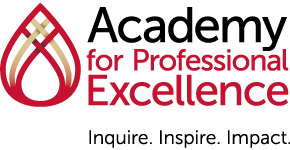
The recent pandemic has challenged social workers in ways that never seemed possible. Faced with assessing a home that you have never set foot in or checking in on a child through a video screen would seem next to impossible at the start of 2020.
However, social workers are used to working in challenging environments. Every situation is unique and we have become experts in our ability to adapt and respond. Social workers are demonstrating adaptability and creativity.
For example, in instances where COVID exposure prevents us from seeing a family in their home, social workers are playing scavenger hunts with children via video to assess the household, asking children to find something in their bedroom that gives them comfort or to find something that water comes out of. Birth parents are having more opportunities to connect with their children outside of formalized visits through things like video bedtime stories.
Safety Organized Practice (SOP) can further support social workers with a practice framework and concrete tools for gathering information with children, parents, and other family members in very creative and deeply informing ways.
What is Safety Organized Practice?
Safety Organized Practice is a collaborative practice approach that emphasizes the importance of teamwork in child welfare. SOP offers strategies and techniques for child welfare caseworkers to build and strengthen partnerships with families and their informal support networks of friends and family members, ensuring safety, permanency, and well-being for children.
Within child welfare agencies, SOP introduces a new learning culture at all levels of the organization. The responsibility of shifting organizational culture and practice of workers, supervisors, and leadership must be balanced. However, leadership involvement is essential from the start of implementation through the end.
How can Safety Organized Practice Help During the Pandemic?
Safety Organized Practice is a tool we can lean into to help us adapt to the current pandemic through the three core objectives of the practice.
1. Good Working Relationships
During the pandemic, we may feel that information available to assess child safety lacks accuracy. We may worry that our conversations with families and children are limited if we are not able to engage families in their living rooms.
This is why the skills around engaging the families and their networks are so important. If we work hard to gain consensus with those we work with and those closest to them, ensuring that our worries are their worries too, then we strengthen our communication.
It is through this strong communication we gain the information we need for our strong assessment. It is through this consensus that the family and their network are called to action to achieve the common goal or child safety.
2. Use of Critical Thinking and Decision-Support Tools
All of the tools that have been available to us in the past are still available to us during the pandemic. Mappings are being done via platforms like Zoom and WebEx, using things as simple as a Word Document to type up the results while screen sharing.
People who may not have been able to attend an in-person mapping in the past are now able to join virtually, expanding the network. Children can draw while they talk to you, expressing their worries and family strengths through the drawing, and screenshots can be taken to capture the image. Structured Decision Making can still be used to guide our conversations and help us think through our assessments.
3. Creation of Detailed Plans for Enhanced Daily Safety of Children
SOP encourages the use of creative methods to ensure child safety. The current pandemic has forced us to relook at these plans and think outside of the box to ensure we have a fail-safe design.
Network members who could be at the house often before the pandemic may no longer be able to come around. Some may have lost their jobs and no longer have the means to participate in a manner they had done before. Safety plans and case plans should be updated to adjust to the current situation.
Incorporating Safety Organized Practice into your practice
In Summary, pandemic or not, good practice is still good practice. It helps us to engage the family and the network, it helps us to fully assess child safety through unique ways of gathering information. We don’t have the luxury of other fields where we can “make do” and “get by” during this time. We have an obligation to provide this essential support to the community and maintain child safety.
Written by Nicole Heesen, CWDS Practice Coach Supervisor
Related articles:
An Update on the Statewide Safety Organized Practice Toolkit
Why You Need to Invest in Your Relationships with the Workforce
Why You Need to Invest in Your Relationships with the Workforce


